|
Gardening Tools Advice-What You NeedSome gardening tools are essential for gardening. Others are a nice thing to have but not absolutely necessary. Different tools may be required if you have very hard soil, like clay. If you are new to gardening, this discussion could help you determine what is your best investment for your area. The Essential Gardening Tools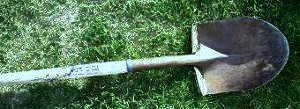
All gardens will require a shovel or a spade for digging and turning the soil. It is a false economy to buy a poorly made shovel, especially if you have hard soil. This tool will last for many years if it is well made. Try to find one that has a solid forged shank, riveted to the handle. The ones with the flat metal that are screwed in can break in hard soil. You want heavy metal, not thin and light. Avoid plastic handles, they will crack over time.
A bow rake, the kind with the short tines, is also important for leveling the soil and moving things around to keep water from pooling up in one spot, or not reaching a high spot. I like to flip it over and use the back when I am doing the final leveling so that it will make it all flat and even.
These are the 3 tools every gardener must have to tend a garden. They are available at garden center like Walmart's, Home Depot, Lowe's, and others. If you are on a tight budget, try looking at garage sales for extras. Most of these tools will last for decades if they are cared for. Sometimes the older, used models are more sturdy.
Additional Gardening Tools As mentioned above, there are several varieties of hoes that can be helpful for certain tasks. Most can be accomplished with the basic hoe by tilting it on a corner, but it is a little harder that way. If you are willing to invest in these additional tools, then the cultivator or Warren hoe is a nice addition. (Last one above)
For those who live in an area with hard clay soil, a pickaxe might be necessary to break up really heavy clay spots. In a garden, clay soil will create problems. If there is an area that will not drain, the plants will drown. Sometimes a pickaxe is necessary to break through the layer of clay. This is true even with a raised bed garden, because the water will pool up beneath it and rot the roots of your plants. Some ground preparation will make it possible for the water to get through and drain away, even if it's just making holes in that layer every foot or so. If you decide to just make holes, then a post hole digger might accomplish this better. A garden fork is useful for digging up root crops, like potatoes, carrots, beets or turnips. It works best in fairly loose soil. I've always managed with just a shovel, but some people like using the fork better. It makes breaking up newly dug soil easier.
Gardening AidsWhile they are not technically tools, there a some other items you should strongly consider using in your garden. These are trellises and tomato cages. Using these aids will help to conserve space and also keep fruit off the soil. Any fruit that spends much time in contact with the soil will begin to rot. It will also become infested with insects most of the time. So it pays to keep your tomatoes, cucumber, squash and other vegetables up off the ground when possible.
You can get a couple of crops of lettuce or radishes in there before the cucumber vine gets large enough to cover them if it is trellised. The wheelbarrow is helpful when moving soil, mulch, compost or other components of your soil mix. You can even mix them in it with a spade or a hoe. It can be used at harvest time too, by holding the produce for you when you dig up carrots, potatoes, or other underground crops. Garden carts, while not as necessary as a wheelbarrow, have a flat level surface that drains. They are a nice way to move flats of seedlings, and even water them, as the excess can drain away through the mesh. Bags of mulch or steer manure can also be loaded onto them. These are not absolute necessities, and can be acquired over time. When your budget allows it, consider them. The Role of a RototillerFinally, if you have a new area to garden in, you might want to use a rototiller. The ground should be dug up or at least loosened first. You should try to remove as much of the weeds by the roots as possible. Once you have clean loosened soil, then you can layer on any compost or steer manure you plan to add. At that point you will want to use the rototiller. They are expensive, but are usually available to rent for a few hours. This route is the best if you have only one garden area to till, as it is much less expensive and only needs to be done once a year. In fact, it's not good to till soil more often, as it damages the structure of the soil if done several times a year.
It will also cause much damage to the soil structure to till it wet. Just moist is perfect for tilling. You will probably need to go over it once to loosen the top few inches and turn the additives under. Then you will go over it again, to let the tiller get deeper into the soil, at least 6-8 inches deep. This will blend everything more evenly and get a better consistency for drainage. Once this is done, you can use your new bow rake to level the soil! |





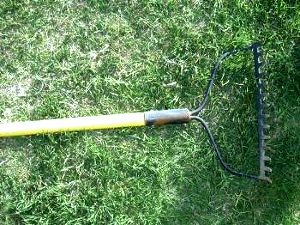
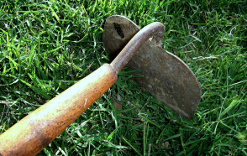
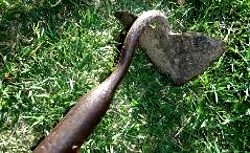
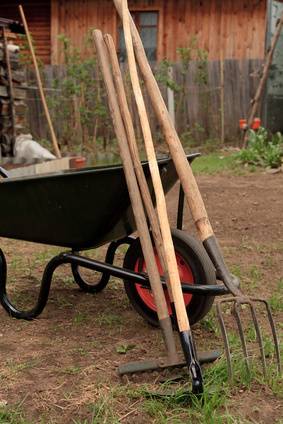
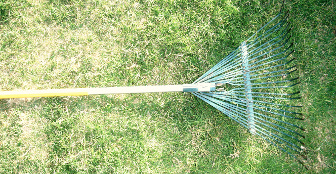
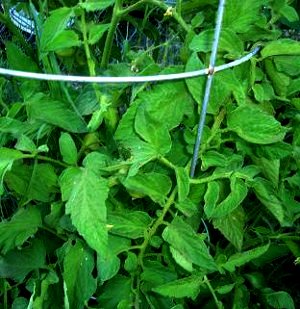
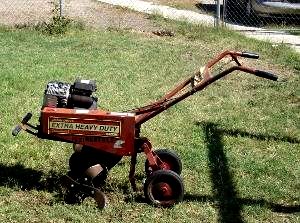 Before using a rototiller, make sure the ground has been loosened, and is moist, not wet. If it is too dry it will be very hard to till. If it is soggy, it will be impossible.
Before using a rototiller, make sure the ground has been loosened, and is moist, not wet. If it is too dry it will be very hard to till. If it is soggy, it will be impossible.